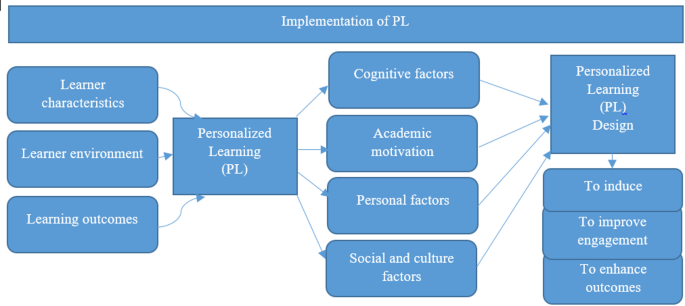Report on South Africa’s Strategy for Gender Equality and Sustainable Development
Ministerial Position on Empowerment and SDG Alignment
In a recent statement, South Africa’s Minister in the Presidency for Women, Youth, and Persons with Disabilities, Sindisiwe Chikunga, outlined the nation’s strategy for advancing women’s empowerment in line with the Sustainable Development Goals (SDGs). The Minister stressed that genuine empowerment is contingent upon providing equal access to key resources, directly supporting the achievement of several interconnected SDGs.
- SDG 5 (Gender Equality): The core objective is to achieve gender equality and empower all women and girls.
- SDG 4 (Quality Education): Ensuring inclusive and equitable quality education is identified as a foundational pillar for empowerment.
- SDG 9 (Industry, Innovation, and Infrastructure): Equal access to technology is crucial for participation in the modern economy.
- SDG 8 (Decent Work and Economic Growth): Creating equal economic opportunities is essential for sustainable and inclusive growth.
Policy Implementation for Economic Inclusion
To translate constitutional rights into tangible outcomes, the South African government has implemented specific policies aimed at fostering women’s economic participation, thereby addressing SDG 5 and SDG 10 (Reduced Inequalities).
- Legislative Framework: The new Public Procurement Act mandates specific actions to promote economic inclusion.
- Procurement Target: A significant commitment has been made to set aside 40 percent of all government contracts for businesses owned by women.
- Economic Impact: This measure is designed to directly support women-led entrepreneurship and contribute to inclusive, sustainable economic growth as outlined in SDG 8.
International Cooperation and Partnerships for the Goals (SDG 17)
Reflecting on the 30th anniversary of the Beijing Declaration and Platform for Action, Minister Chikunga acknowledged China’s leadership in advancing gender equality. In alignment with SDG 17 (Partnerships for the Goals), South Africa expressed its commitment to enhancing bilateral cooperation with China under the China–South Africa Strategic Cooperation Framework (2020–2029). Key areas for collaboration include:
- Digital Transformation: Leveraging technology to empower women, supporting SDG 5 and SDG 9.
- Vocational Training: Enhancing skills development to improve employment outcomes, contributing to SDG 4 and SDG 8.
- Women-led Entrepreneurship: Fostering an ecosystem that supports female entrepreneurs, directly advancing SDG 5.
Analysis of SDGs in the Article
1. Which SDGs are addressed or connected to the issues highlighted in the article?
- SDG 5: Gender Equality – This is the central theme of the article, focusing on women’s empowerment, equal opportunities, and policies to advance gender equality.
- SDG 8: Decent Work and Economic Growth – The article discusses economic empowerment for women through access to government contracts and support for women-owned businesses, which contributes to inclusive and sustainable economic growth.
- SDG 4: Quality Education – The minister explicitly mentions the need for equal access to education and vocational training as a pillar of women’s empowerment.
- SDG 17: Partnerships for the Goals – The article highlights the strategic cooperation between South Africa and China to advance shared goals related to women’s empowerment, digital transformation, and training.
2. What specific targets under those SDGs can be identified based on the article’s content?
-
SDG 5: Gender Equality
- Target 5.5: Ensure women’s full and effective participation and equal opportunities for leadership at all levels of decision-making in political, economic and public life. The article’s focus on creating tangible policies for women’s empowerment and supporting women-owned businesses directly relates to increasing women’s participation in economic life.
- Target 5.a: Undertake reforms to give women equal rights to economic resources. The South African government’s commitment to allocate 40% of contracts to women-owned businesses is a direct policy reform aimed at providing women with equal access to economic resources.
- Target 5.b: Enhance the use of enabling technology, in particular information and communications technology, to promote the empowerment of women. The mention of strengthening cooperation in “digital transformation” points directly to this target.
-
SDG 8: Decent Work and Economic Growth
- Target 8.3: Promote development-oriented policies that support productive activities, decent job creation, entrepreneurship, creativity and innovation. The new Public Procurement Act, which supports women-led entrepreneurship, is a clear example of a development-oriented policy aimed at fostering inclusive growth.
-
SDG 4: Quality Education
- Target 4.4: By 2030, substantially increase the number of youth and adults who have relevant skills, including technical and vocational skills, for employment, decent jobs and entrepreneurship. The minister’s emphasis on “vocational training” and cooperation with China in this area aligns with this target.
-
SDG 17: Partnerships for the Goals
- Target 17.9: Enhance international support for implementing effective and targeted capacity-building in developing countries to support national plans to implement all the Sustainable Development Goals. The “China–South Africa Strategic Cooperation Framework (2020–2029)” is a mechanism for such capacity-building, specifically in areas like vocational training and digital transformation for women.
3. Are there any indicators mentioned or implied in the article that can be used to measure progress towards the identified targets?
-
For SDG 5 and SDG 8:
- A specific, measurable indicator is explicitly stated: “40 percent of government contracts for women-owned businesses.” This can be used to track the implementation of the Public Procurement Act and measure progress towards women’s economic empowerment (Targets 5.a and 8.3).
-
For SDG 4:
- While not a quantitative figure, the focus on “vocational training” implies an indicator related to the number or proportion of women participating in and completing such programs as a result of the China-South Africa cooperation.
-
For SDG 5:
- The mention of “digital transformation” implies a focus on increasing the proportion of women with access to and skills in using information and communications technology (ICT), which is a key measure for Target 5.b.
-
For SDG 17:
- The existence of the “China–South Africa Strategic Cooperation Framework (2020–2029)” itself serves as an indicator of a formal partnership dedicated to achieving development goals. Progress could be measured by the number of joint initiatives launched under this framework.
4. Table of SDGs, Targets, and Indicators
| SDGs | Targets | Indicators |
|---|---|---|
| SDG 5: Gender Equality | 5.a: Give women equal rights to economic resources. 5.b: Enhance the use of enabling technology to promote the empowerment of women. |
Proportion of government contracts awarded to women-owned businesses (specifically, the 40% commitment). Increased access to and use of digital technology by women. |
| SDG 8: Decent Work and Economic Growth | 8.3: Promote development-oriented policies that support entrepreneurship. | Implementation of the Public Procurement Act setting aside 40% of contracts for women-owned businesses. |
| SDG 4: Quality Education | 4.4: Increase the number of adults with relevant skills, including vocational skills, for entrepreneurship. | Number of women participating in vocational training programs through bilateral cooperation. |
| SDG 17: Partnerships for the Goals | 17.9: Enhance international support for targeted capacity-building. | The existence and implementation of the China–South Africa Strategic Cooperation Framework (2020–2029). |
Source: news.cgtn.com







